
By Katherine Salant
Over the last 100 years, our houses and our lifestyles have continuously evolved, but our aesthetic compass seems firmly fixed. Despite the exhortations of generations of architects to embrace the slick, spare and techno, most people prefer traditional styling and floor plans that have been massaged to incorporate new rooms and an increasingly informal lifestyle.
But car storage continues to be a nettlesome design issue, whether the design is modern or traditional. The connection of the garage to the house is always awkward, invariably funneling owners through a storage or service room before reaching the living space, and the garage has become so big it often overwhelms the rest of the house. Not only do most households today have two cars that they want to put under roof, they also have power mowers, gardening equipment, bicycles and other sporting equipment, recycling bins and garbage cans, and just miscellaneous stuff.
To get in the two cars, plus the garbage cans and recycling bins and maybe a bike or two, the garage must be at least 19 feet wide and more than 400 square feet in area. If you want to be able to open a car door and not hit the other car, and get all the lawn and gardening equipment in too, the garage needs to be 24 feet wide and close to 600 square feet in area. Throw in the large overhead door and the garage has become the architectural equivalent of the 900 pound gorilla that can't be ignored.
Discreetly placing this giant gorilla in the far corner of a large lot is rarely an option. Even when it is, most owners want the convenience of having the garage attached to the house. Attaching the garage on the side of the house is out because with rising land costs, lots are too narrow. The only alternative is attaching the garage at the front of the house where, because of its size, it becomes the main architectural feature. And, given many builders' desire to economize on asphalt paving, it is often as close to the curb as possible.
When many such houses are lined up together, the streetscape is largely garage doors, producing, critics suggest, an atmosphere that is less friendly. To create an environment that is more neighborly, many land planners favor moving the garage to the rear of the house, where it is accessed from a rear alley.
This does improve the look of the street - varied house fronts with many smaller door and window openings are certainly more interesting visually than large flat garage doors - but this has its own set of problems. Adding the alleys raises land development costs and house prices, and moving the garages to the rear doesn't necessarily enhance social interaction among neighbors.
Dallas architect Will Snyder observed that in Dallas, the alleys often become a secondary road system that residents use instead of streets, so much so that in one instance Snyder recalled a friend giving directions to his house through the alleys because he never used the streets and couldn't describe them.
Snyder also said that Dallas neighborhoods with alley and rear garages have been a tempting target of burglars because they can enter the house far less obtrusively from the alleys and then, unobserved, loot a house.
Moving the garage to the rear of the house also puts it squarely in view of the main living spaces, which are now at the rear of the house, another reason that many new home buyers have not embraced this idea.
Not every architect and planner thinks the garage at the front is so bad. Both Gaithersburg, Md., architect Randy Creaser and Santa Barbara architect Barry Birkus agreed that when the garage is on the front of the house, residents see the comings and goings of neighbors and actually feel more connected to the neighborhood. The trick, they both said, is masking the garage to disguise its bulk.
When confronted with lots that are only 35 feet wide - so narrow that a front loading garage is unavoidable - Creaser tries to add a second story above so as to incorporate the garage into the massing of the rest of the house, and to add a strong entry element such as a front porch.
For much larger houses with four-car garages and larger lots, Birkus has provided two attached 2-car garages that open off a separate motor court to one side of the house. The garage that faces the street is recessed at least 20 feet from the front of the house. The other garage is closer to the front lot line, but it has a side load and its street side has windows.
Whether the garage is at the front, back or side, however, the connection between the garage and the rest of the house is invariably awkward. Owners nearly always enter the house by driving into the garage and then going into the main house through a rear service area near the kitchen. The entry foyer, whether modest or voluminous, is rarely used.
Finding the aesthetics of this arrangement distasteful as well as impractical, Creaser adds a "garage foyer" whenever possible. He includes a countertop to drop a briefcase and sort mail, and a closet. If the space is large enough, he designs a row of large cubbies for family members to put backpacks, coats, and sports equipment.
Perhaps one reason that the garage confounds designers is that unlike other rooms that have been added to houses over the last 100 years, it didn't grow out of another function. For example, what we call the family room today is really just a modern version of the back parlor of the Victorian era, an inner sanctum that only family members used. As Bethesda, Md., architect Sami Kirkdil put it, "all the images of old houses we know and love, there is no car."
At the turn of the last century, when the rambling Victorian, colonial and tudor-styled houses that we cherish today were built, car ownership was unusual. The few households who owned one kept it in a separate storage shed behind the house and brought it out only for special occasions, said Birkus, who has studied the history of car storage in American houses in his efforts to find new solutions.
In the following decades, car ownership became more common, but most households still owned only one car. Two-car households and two-car garages become the norm, and gardening and sports burgeoned only in the late 60's and 70's. Today, as buyers press for three and four-car garages, "the car and the garage seem to be possessing the house," Birkus observed.
The perfect garage solution remains elusive. But given the ingenuity of designers and builders to bend historical forms to current functional needs or to design something entirely new, this dilemma will eventually be solved.
Copyright 1999-2006 Katherine Salent. Distributed by Inman News.
http://www.doityourself.com/stry/garagesolutions












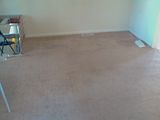
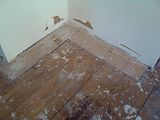

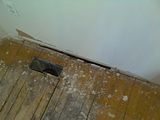
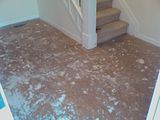
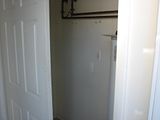
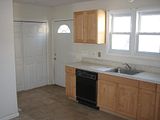



 When you want to spend your cash on good vino instead of the rack that will hold it, just stack up a set of mailing tubes and go. This project is dead simple, and stowed away under a shelf (as pictured), and optionally painted a color of your choice, it looks good, too. (
When you want to spend your cash on good vino instead of the rack that will hold it, just stack up a set of mailing tubes and go. This project is dead simple, and stowed away under a shelf (as pictured), and optionally painted a color of your choice, it looks good, too. (
 Stop fumbling around in that darkened cupboard or closet—rig up an instant on fridge-like lighting system with a plastic wristwatch holder and some ingenuity. Connect a reverse switch to rope lights inside the door and mount the switch inside a Timex watch holder. When the door closes, the switch opens and the light goes off. When you open the door? The lights snap on automatically. Here's my
Stop fumbling around in that darkened cupboard or closet—rig up an instant on fridge-like lighting system with a plastic wristwatch holder and some ingenuity. Connect a reverse switch to rope lights inside the door and mount the switch inside a Timex watch holder. When the door closes, the switch opens and the light goes off. When you open the door? The lights snap on automatically. Here's my  Every kid's dream is to discover a secret door magically open when you pull a book off the shelf, and dedicated DIYer Simon Shea made that dream come true. This is a really cool project, but it obviously takes quite a bit of commitment. (
Every kid's dream is to discover a secret door magically open when you pull a book off the shelf, and dedicated DIYer Simon Shea made that dream come true. This is a really cool project, but it obviously takes quite a bit of commitment. ( When the heat gets to be too much and central air isn't an option, build yourself a DIY AC for thirty bucks. Put together by college students suffering through summer school in an air conditioner-less dorm, this project ain't pretty, but it sure is nifty. Instead of wasting water by letting it run off the contraption, here's a
When the heat gets to be too much and central air isn't an option, build yourself a DIY AC for thirty bucks. Put together by college students suffering through summer school in an air conditioner-less dorm, this project ain't pretty, but it sure is nifty. Instead of wasting water by letting it run off the contraption, here's a 


